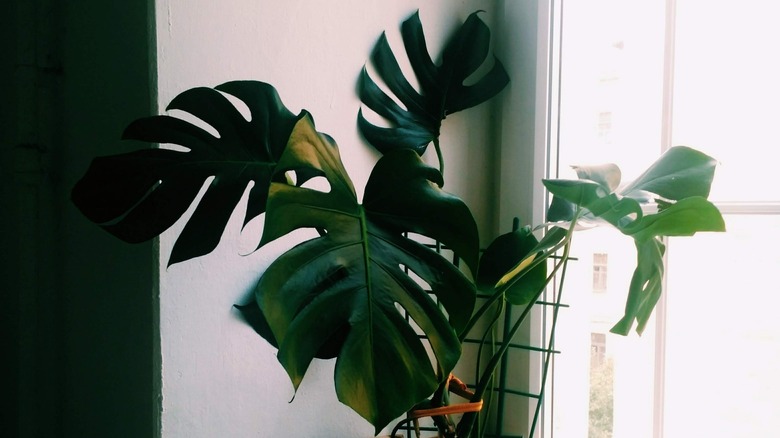Here's Why You Should Be Staking Your Monstera
We may receive a commission on purchases made from links.
Monstera deliciosa, also known as the Swiss cheese plant, is a staple in many homes. It makes the perfect statement piece and can elevate any room. The Monstera plant has gorgeous, glossy, heart-shaped split leaves with long, green stems. It can grow up to 15 feet tall given the right conditions. Monstera plants grow at a slower pace when they're indoors. Without enough sunlight, the Monsteras' stems can start to droop, especially when they're in their beginning stages. It's one of the easiest plants to care for but is also fast climbing, so staking it for support is essential.
However, overwatering or underwatering can also cause the Monsteras to bend over and rest on nearby tables or sofas. Pay special attention to your plant's watering schedule. You might need to adjust how much water it's receiving if it's being overwatered or underwatered. Check the soil occasionally and ensure the surface is moist and not wet. Although if your Monstera is receiving the right amount of water, but it's still dropping, staking it will give it the support it needs.
How to stake your Monstera plant
TikTok user @ourbarnesyard set up an arched pole to stake her Monstera; it made holding the stems easier. Using an arched or moss pole helps train the plant to grow upward, especially when it is starting to grow. In addition, staking your Swiss cheese plant allows the sunlight to reach its leaves better and reduces any stress the plant might have. Staking your Monstera is straightforward; you'll need an arched or moss pole and velcro strips. Amazon has a three-pack U-shaped Bamboo Trellis to support plants for $15.99, and they sell velcro strips for $9.47.
The TikToker stakes her Monstera quickly and easily. Start by placing your desired pole in the plant's soil. Situate the arch in the middle of the pot and secure the stems from the front and the back. Then, cut pieces of the velcro strip to secure the branches to the pole. Attach one stem at a time to the bottom and top part of the stem. Continue tying the stems until all of them are standing vertically. The leaves will still bend over, but they'll stand upright over time as they receive more sun and have enough water.
